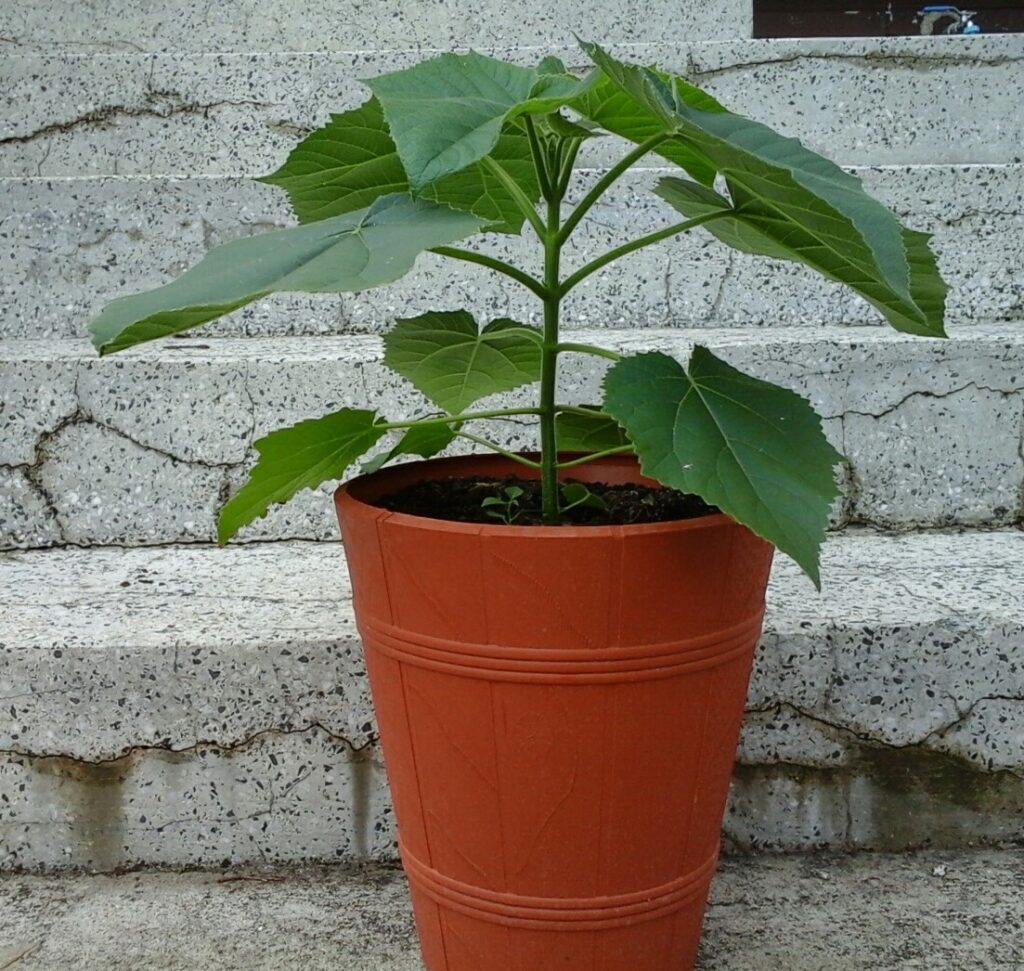Paulownia

Paulownia (Paulownia)
is fast growing tree originating from south-east regions of China. The genus involves seven species:
- P. elongata,
- P. fortunei,
- P. catalpifolia,
- P. fargesii,
- P. kawakamii,
- P. taiwaniana,
- P. tomentosa,
some of which are used both as biomass source and in wood/forniture industry.

Paulownia seedlings
are obtained via seed germination or by in vitro micropropagation. The plants should be planted between May and July, and the density of planting depends on whether it is for wood or for biomass production, and ranges between 500 and 3500 pcs per 1 ha, respectively. In the second case the yield of biomass can reach up to 50 tons from 1 ha. The combustion value of paulownia wood is 19,5 MJ per kg of dry matter.

During 6 years after planting paulownia reaches the height of 15 m, however first harvest may be performer after 2-3 years, the next harvests every 3-4 years. The plantation can be exploited for ca. 20 years. The wood is very light and characterises by the highest strenght to weight ratios comparing to any wood in the world. It has a density from 300 to 320 kg/m3, is knot free and has a high temperature resistance – ca. 420 oC.

Paulownia easily grows on light sandy soils of pH ranging from 5,5 – 8,9.
We offer two Paulownia clones:
- P. elongata from US company http://www.worldpaulownia.com , which is frost-resistant to ca. -23oC,
- hybrid of P. elongata and P. fortunei that originate from China and shows similar frost-resistance to P. elongata.
We offer rooted in vitro cuttings.
